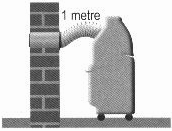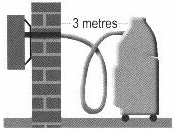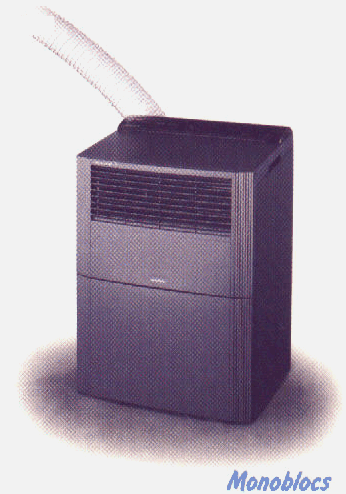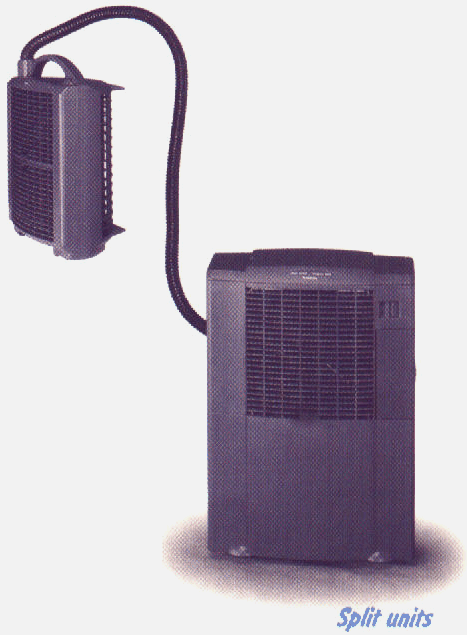|
||||||||||||||||||||||||||||||||||||||||||
|
Choosing
the right unit
|
|||||||||||||||||||||||||||||||||||||||||
| You can work out your BTU requirement by measuring the size of the room you need to cool. The effectiveness of the unit is dependent on various other factors such as the level of sunshine, the level of insulation, ventilation, the number of people and the amount of electrical equipment in the room. To work out your cooling requirement, measure the cubic capacity of the room you wish to cool. Average ceiling height is 2.75metres. Width and length can be measured by pacing. Then multiply the figure cubic feet by 4 for BTUs and cubic metres by 40 for watts. | 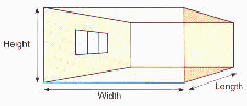 |
For example:
|
Imperial
|
Metric
|
These measurements account for a room with three or four people, a PC and a photocopier. For each extra person or PC add 120 Watts.
As a sirnple guide to your requirements just calculate the square footage of your room and refer to the price list
Windows
Windows make installation of a portable air conditioner much easier and are essential if you wish to have a Split unit.
On Monoblocs, the maximum hose length is 3 metres but the recommended length is just 1 5 metres. In the absence of a window, you may duct the hose into a suspended ceiling providing you have at least a 12" void.
Split units generally have a maximum umbilical cord length of 2m. The external condenser unit will either sit on a window !edge or hang outside on the supplied hook however, the window has to have an opening wide enough so that the condenser unit can be passed through the opening.
Electrical
supply 
All of our units work from a standard 240 V, 13 amp socket (except model 30H)
Installation of any of our portable units is very simple. Just place the hose for a Monobloc or the condenser for a Split unit, outside the room and then switch on. If you are ducting to a suspended ceiling, then simply push the hose into the void. For maximum efficiency, avoid siting your air conditioner in the following areas:
- In direct sunshine, or near a heat source
- On a mezzanine floor where the cold air will fall to the ground floor
Types
of Units 
| Small air-to-air Our range of air to air machines is suitable for all types of domestic and commercial applications. All the units work by expelling hot air through an exhaust duct, similar to a tumble drier. These compact units can cool areas of up to 18sq. m and can be simply wheeled into position and switched on. All units can be ducted into a ceiling void if desired. | 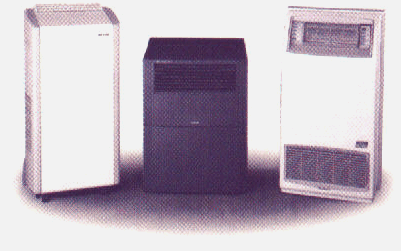 |
| Split-units for where there is restricted window access we recommend our split range of Portable Air Conditioners. The separate condenser unit is hung outside a window providing maximum cooling comfort inside. The split range covers areas up to 34sq.m, again the units are simple to operate | 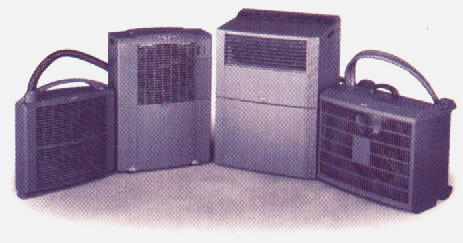 |
| Our industrial range of Portable Air Conditioners can cool areas of up to 79sq.m. They are ideal for spot cooling personnel, equipment or production processes with maximum efficiency. Easy to install, they can be ducted into a false ceiling or through a window The industrial range have flexible cold head ducts that direct the high volume of refrigerated air exactly where it is needed. | 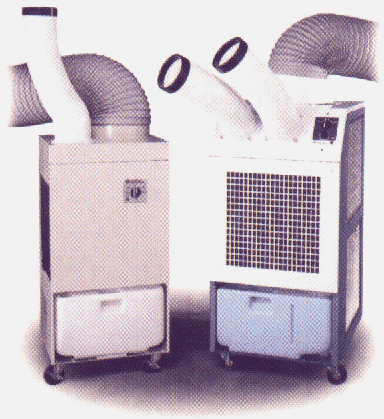 |
Frequently
asked questions 
Where can I use a mobile?
Mobiles are perfect for the home and office. They need no major installation and connect into a normal 13 amp socket.
How do I work out which air conditioner I need?
Cooling power of air conditioners is measured in Btus orWatts. As a rough guide, Multiply L x W x H of the room. If in feet x 4= Btu/h required. If in metres x 40 = watts required. Allow for extra heat gain. See room sizing guide.
How cold can I make a room?
There are limits to how cold the room temperature can be made. On most machines this is around 21°C.
How much does an air conditioner cost to run?
Most single unit air conditioners have an input power of below I kw per hour, therefore the cost to run on full power would be about 6 pence per hour. Split systems have inputs around 1.3kw per hour so would cost in the region of 9 pence per hour to run on full power.
Where does the heat go?
Air conditioning units actually take heat from the room and expel it to the outside. Single units do this by means of the I metre flexible hose. Split units discharge the heat via the external condenser unit.
What if l buy an air conditioner smaller than is needed?
When the heat load in a room is greater than the unit's cooling capacity an air conditioner will be acting as a comfort cooler or spot cooler, taking heat out of the room but not actually reducing temperature.
Corby Refrigeration, Gordon House, Dale Street, Corby, Northamptonshire, NN17 2BQ UK
